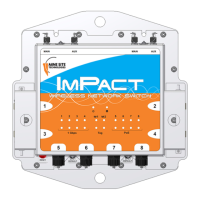2.1 Installation Types and Coverage
Wireless network coverage can be described as:
Wi-Fi hotspot — Network coverage is provided in key areas, such as crib areas and refuge bays.
Full coverage — Seamless wireless coverage by strategically placing NS50 units so their radio
fields overlap.
A NS50 can communicate at wireless distances of 150-300 metres, depending on the geometry and
geology of the mine.
2.2 Power Requirements
The power requirements for a network are unique to each site installation. Determining power
requirements can be complex and is dependent on various factors such as the number of NS50 units,
PoE devices, branches in the network and composite cable lengths.
The NS50 is designed to operate at a wide voltage range, from a minimum of 8VDC up to 54VDC.
Each NS50 in a network can internally step up the incoming voltage to 48VDC in order to supply
power to its connected PoE devices. The NS50 needs to receive a minimum input of 15VDC to power
PoE devices.
48VDC power supplies are used for large networks to maximise the distance between power
supplies. For smaller networks of 1-2 nodes, it is recommended that a lower voltage 24VDC power
supply is used.
External power supply recommendations:
- AC to DC power supply with galvanically isolated output(s).
- 48VDC output(s) (nominal)
- With 6A breaker / fusing in line with each 48V output.
2.3 Choosing Antennas
Antennas are connected to each NS50 to provide wireless network coverage. The type of wireless
coverage, surrounding geology, tunnel topology and stratum type are factors that will determine the
choice of antenna. A minimum of one antenna is required per WAC in a NS50.
Antennas consist of two directional patterns:
Omnidirectional antennas — radiate equally in all directions for a short range, providing
immediate coverage in an open area.
Directional antennas — radiate in a specific direction over a longer range. A higher gain antenna
will have a longer range and is more directional. It is important that directional antennas are
aligned properly between NS50 units to ensure continuous coverage between units.
The antenna radiation pattern and polarisation need to be considered to provide suitable wireless
coverage in an area.

